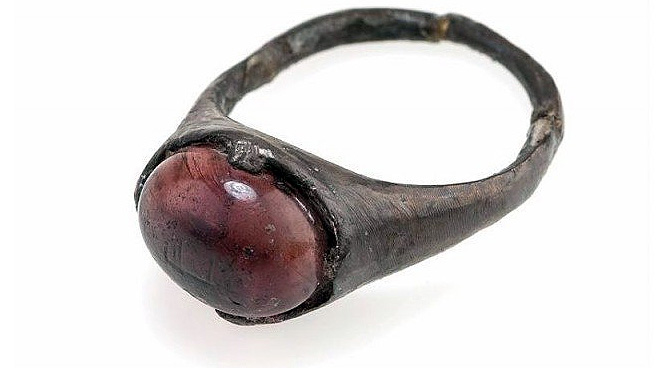Ring with Arabic inscription found in a 9th century Viking woman’s grave, Sweden (Source)
Dating back to March 2015, news regarding the discovery of a ring found on a Viking woman in an ancient burial ground with the Arabic inscription ‘For/To Allah’ erupted in mainstream media.
Some named it the “mysterious ring”, some actively deliberated and debated questions as well as made up theories of how or why it arrived in Sweden. It is worth noting however that this was not the only contact documented between the Viking and Muslim Civilisation.
This featured story has been extracted from “A Tale of Two Civilisations: The Viking and the Muslim World” by Cem Nizamoglu and Sairah Yassir
Here we highlight five awesome facts about Vikings and Muslim Civilsation:
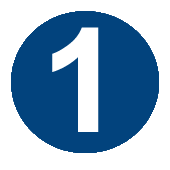 |
Recorded Accounts |
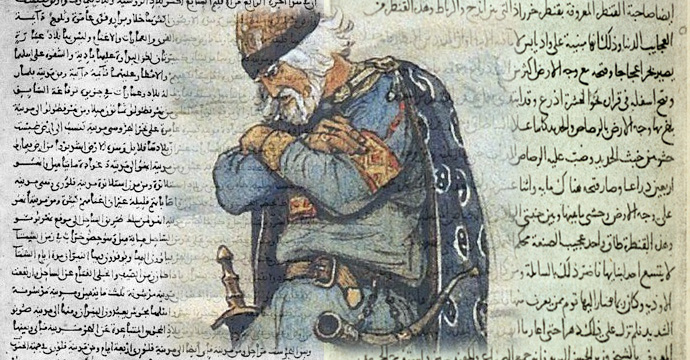
One account in particular that was written and narrated by the 10th century traveller from the Muslim Civilisation, Ahmed Ibn Fadlan, seems to be most widespread and extensive in terms of content. However other scholars such as Muhammad al-Idrisi (1100-1165), Ibn Khurradadhbih / Ibn Khordadbeh (820-910), al-Tartushi (1059-1127), al-Mas’udi (896-956), al-Muqaddasi (940-991), Ibn Rustah (10th Century) , Miskawayh (932-1030), Ibn Hawqal (10th Century), Ahmad al-Ya’qubi (897-898), Ibn Qutiya (10th Century), Yaqut al-Rumi (1179-1229), Yahya Ibn Hakam al-Bakri (772 – 866), al-Maqqari (1578-1632) and Ibn al-Athir (1160-1233) also share their observations of these saqalibah, a term first employed in the 10th century translated as “fair-haired, ruddy-complexioned population of Central, Eastern and North-Eastern Europe”
For example according to 10th Century explorer and geographer Ibn Rustah, they were “handsome, clean and well-dressed” and he praised them even further.
 |
They keep their clothes clean and the men adorn themselves with armbands of gold… They are generous to each other, honour their guests and treat well those who seek refuge with them, and all who come to visit them. They do not allow anyone to annoy or harm these. And whenever anyone dares to treat them unfairlythey help and defend them.” |
Even Ibn Fadlan (b.877 – d.?), who though did not appreciate their personal cleanliness habits, praised them as being “perfect physical specimens” and described them as “tall as date palms“, which this comparison could be said to have been one of the highest compliments one could receive from an Arab in those times.
 |
Warrior Vikings |
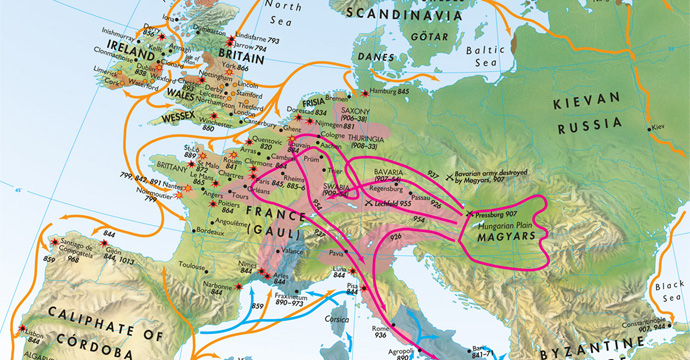
From the 8th to the 11th century, the Vikings were renowned for roaming the world and covering large distances, which preceding them some historians hold was a feat never done before.
Their expeditions are said to have extended from Western-Europe to Central Asia, it is from here that sources indicate the extent to which the Vikings had contact with the Muslim Civilisation during Ancient Times. Though the Vikings had sacked several cities in Western and Eastern Europe, historians outline that it was in Muslim ruled lands, such as those governed by the Abbasids, that the Vikings found “emporiums beyond their wildest dreams”.
Although they may not have been held in high regard in the opinion of people in Al-Andalus, their raids demonstrated their military might and effective strategy. Archaeologist Bjørn Myhre is said to have argued that, “They [the Vikings] were not ignorant barbarians. They knew exactly the kind of military and ideological pressure they were up against”
One account in Omar Mubaidin’s article outlines “A Viking fleet sacks Lisbon, Seville, Cadiz and Algeciras in the Emirate of Cordova and Asilah in Morocco. In retaliation, the forces of the Emir trap the Viking fleet on the River of Guadalquivir destroying 30 ships and killing 1,000 Vikings…”
 |
Merchant Vikings |
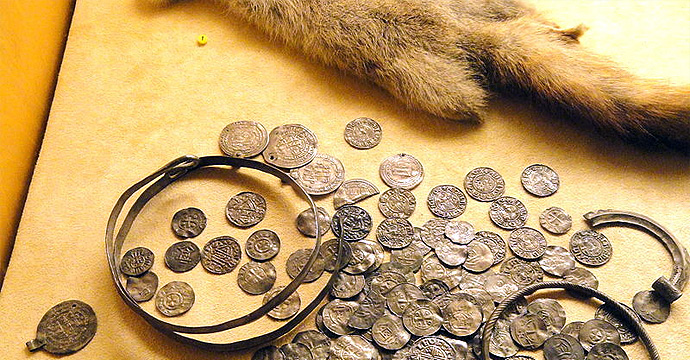
People from the Viking and Muslim Civilisation established trading centres such as Kiev and Novgorod, part of the “Volga Trade route”, where they are believed to have first began noting down their observations regarding the Vikings, or Rus as they were referred to in Arabic.
It was a cache of dirhams (Arabic coins) “that helped fuel the Viking Age“. What is more, the dirham was said to be considered to be of such might that in Viking York and Dublin between the 10th and 12th centuries it was used as common currency.
It was in the quest of these silver dirham, the Scandinavians resorted to venturing East in the first instance. Likewise, in al-Mas’udi’s accounts, merchants and traders from the Muslim Civilisation were eager to “possess caps and coats made of black fox, one of the most prized of all furs.”
The Vikings also encountered “The Turks, and especially the Khazars and Bulgars, [who] were the dominant powers in the region when the Rus [Vikings] arrived. The texts mainly show how powerful the Turks were. The Rus couldn’t just come in swinging their swords and take-over”. As Jonathan Clements note the “Vikings left the Muslim world alone, preferring instead to serve as mercenaries in its armies, or trade with it in valuable commodities… … they [Vikings] may have been raiders at the European end of trade route, but at the Middle Eastern end they were merchants…”
 |
I have seen the Rus [Vikings] as they came on their merchant journeys and encamped by the Itil...” (Ibn Rustah) “They [Vikings] treat their servants well and dress exquisitely because they are such keen traders” (Ahmed Ibn Fadlan) |
 |
Muslim Vikings |
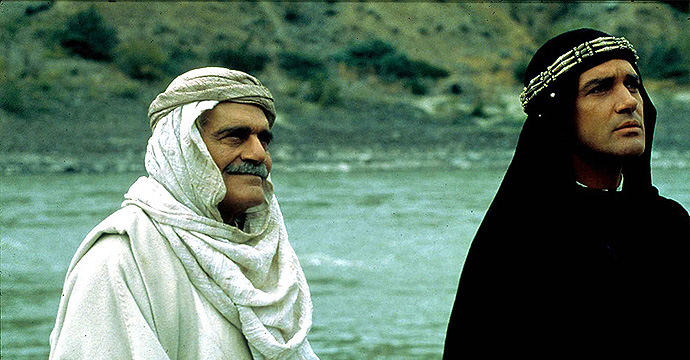
www.1001inventions.com/omar_sharif
Evidence pertaining to the Vikings converting to Islam includes a memoir recorded by the 16th century geographer from Muslim Civilisation, Amin Razi who is reported to have stated that:
 |
…They [the Vikings] highly valued pork. Even those who had converted to Islam aspired to it and were very fond of pork.” |
Omar Mubaidin’s article states: “Vikings would make numerous raids against both Muslim and Christian states in the Iberian Peninsula. Eventually, a community of settled Vikings, who converted to Islam in southeast Seville, would be famous for supplying cheese to Cordoba and Seville.”
In Andrew Marr’s BBC Documentary, “History of the World: Into the Light”, Marr commented on how Vikings in Russia also came very close to converting to Islam with their king being unable to initially decide which of the world’s religions would suit them best.
 |
Discoveries |
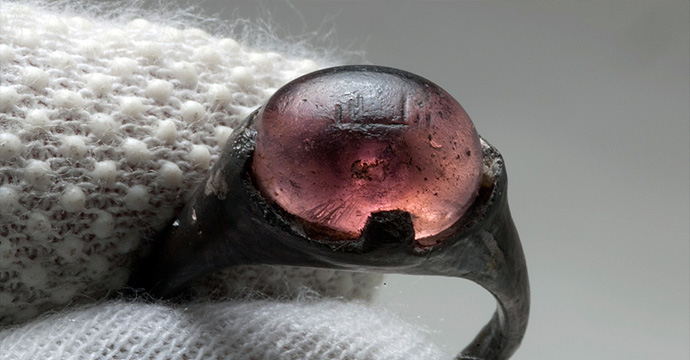
In a research paper published on 23rd February, 2015, archaeologists noticed that an excavation of a woman who seems to have been buried in the 9th century bore a silver ring with an accompaniment of a purple stone. It should be noted that the ring itself was discovered in the late 19th century, yet only recently was a Kufic Arabic inscription identified. The word reads as “il-La-La” which means “for” or “to Allah (God)”. Though the attire of the woman in the grave seems to be traditionally Scandinavian, her decomposed body made it hard for the researchers and archaeologists to determine her faith and ethnicity. Thus making people question – was it a war spoil? A gift? A part of her traditional attire? Or, was she a convert to Islam? We cannot confirm yet.
At the moment the ring is in The Swedish History Museum in Stockholm – historiska.se.
Viking women were known to have sported various pieces of jewellery, Ibn Fadlan is said to have noted the Rus (Viking) women bearing neck rings of gold and silver:
 |
[She has] one for each 10,000 dirhams which her husband is worth; some women have many. Their most prized ornaments are green glass beads of clay, which are found on the ships. They trade beads among themselves and pay a dirham for a bead. They string them as necklaces...” |
The ring, combined with the unearthing of the dirham (Arabic coins) and Muslim astronomer figures found on the Astronomical Clock in the Lund Cathedral in parts of Europe suggest that more studies and research should be done to uncover similar artefacts signifying European and Muslim Civilisation inter-connectivity.
Examples such as the aforementioned demonstrate the mutually beneficent relations Muslim and non-Muslim civilisations have enjoined in for centuries. Furthermore, these discoveries indicate the vast multicultural wealth which lies in overlooked places as it does in overlooked languages.
Further study will inspire others to search for more evidence with regards to past civilisations. Moreover, it will demonstrate that these magnificent discoveries did not originate from thin air, rather it is our misconception and lack of knowledge of those times that prevent us from unearthing other exciting artefacts which may well be in plain view.
 |
Conculusion |
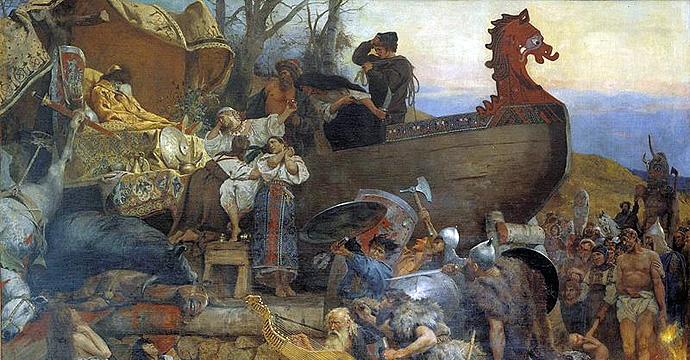
If trade, political envoys, war and immigration amongst other factors were brought to light, we may yet learn of additional contacts made between the Vikings and the Muslim Civilisation, such as the ring with an Arabic inscription on a Viking Woman. The sensationalism and mystery created around this discovery could be argued to be born from the lack of information researched or ellipsis on this subject.
We would like to conclude our article with this important note made by Dr Anne-Maria Brennan, Chair of CE4tF:
 |
The ring was found in the 19th Century, and only recently has the Arabic inscription been noticed. It makes you wonder, how many other artefacts are out there that are undiscovered? There are thousands if not millions of manuscripts waiting to be translated and studied – what gems, what precious information, what insights into history are hidden within them? Europe is inundated with links to Islamic culture, yet many still see the two as worlds apart. Take a closer look and we see castles, fountains, books, ceramics, artefacts, tools and many other things throughout Europe – all beautiful reminders of a Golden Age of Islam. The presence of this ring shows how prolific Islamic culture was – at one time trade and education were what people from all over travelled to the Islamic civilisation for. The dirham was the strongest currency. The discovery of this ring is a wonderful souvenir of a time where people of all background and beliefs lived and worked together in harmony.” |
Note: Please see the long article itself for all image and text references and sources.
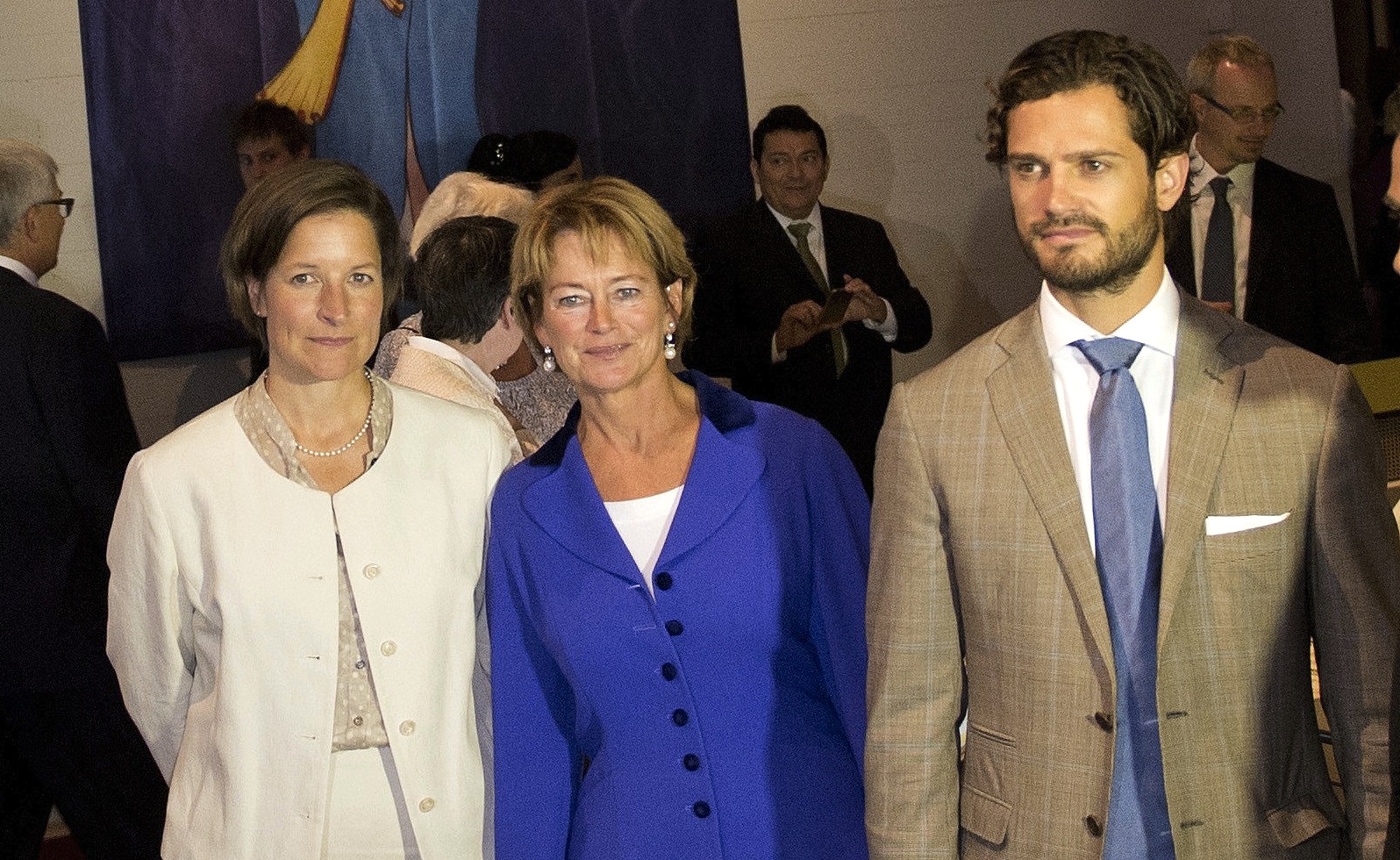
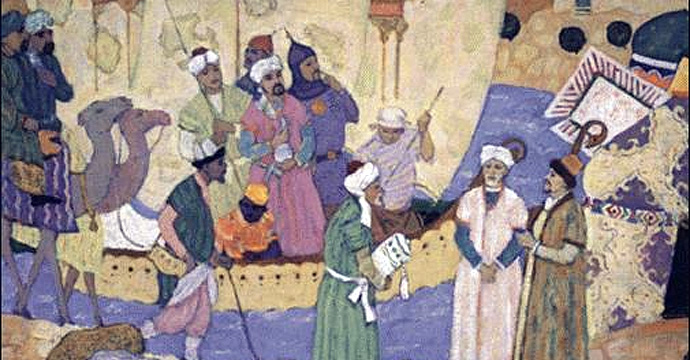
www.muslimheritage.com/node/758
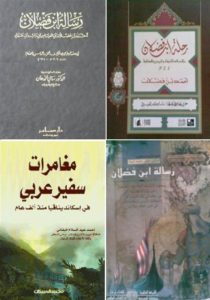 |
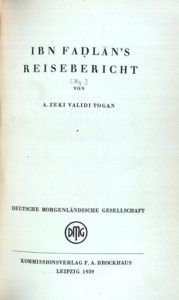 |
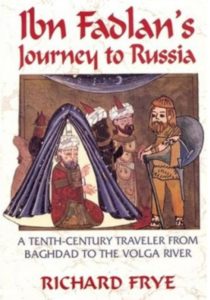 |
|
Front covers of four recent Arabic publications of Ibn Fadhlan’s narration of his journey to Russia. |
Frontispiece of the German translation of Ibn Fadhlan’s book. Edited by Ahmed Zeki Validi Togan |
Front cover of Ibn Fadlan’s Journey To Russia: A 10th Century Traveler From Baghdad to the Volga River, edited by Richard N. Frye |
| (Source) www.muslimheritage.com/article/scandinavia-and-ibn-fadlan | ||
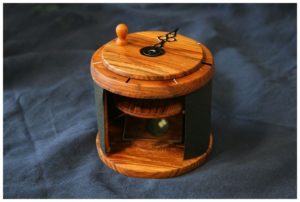 Sunstone Compass made by researchers at the University of Rennes. It stems largely from a passage in a 13th-century manuscript called St Olaf’s Saga |
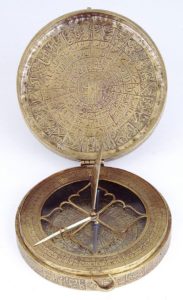 More advanced, Arabic inscripted, compass |
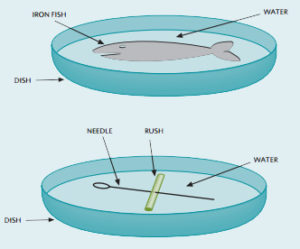 13th-Century compass drawings used by seafarers from Muslim Civilisation of that time |
||
| (Source) www.muslimheritage.com/article/origins-islamic-science#ftnref108 | ||||
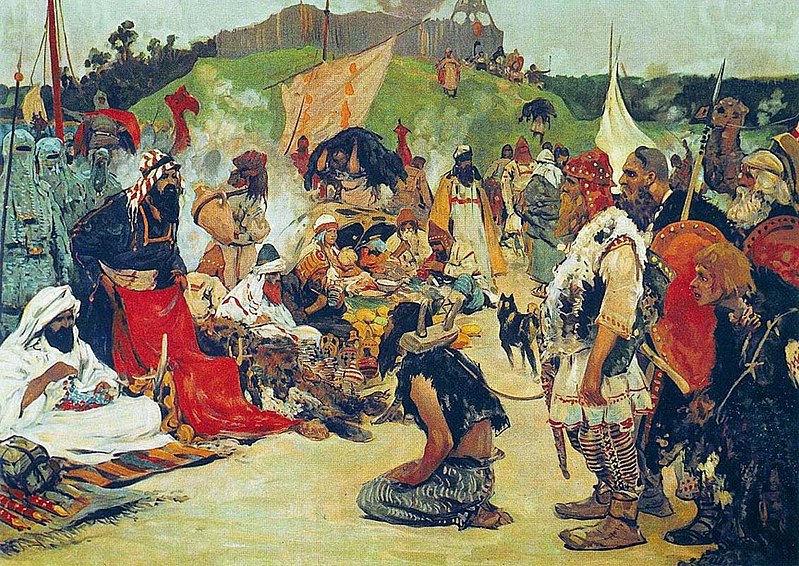
www.bbc.co.uk/programmes/b00vrx8g
A handful of Arabic 10th century silver coins found by brothers Arvid and Edvin Sandborg on the Swedish island of Gotland
www.saudiaramcoworld.com/issue/199906/among.the.norse.tribes-the.remarkable.account.of.ibn.fadlan.htm
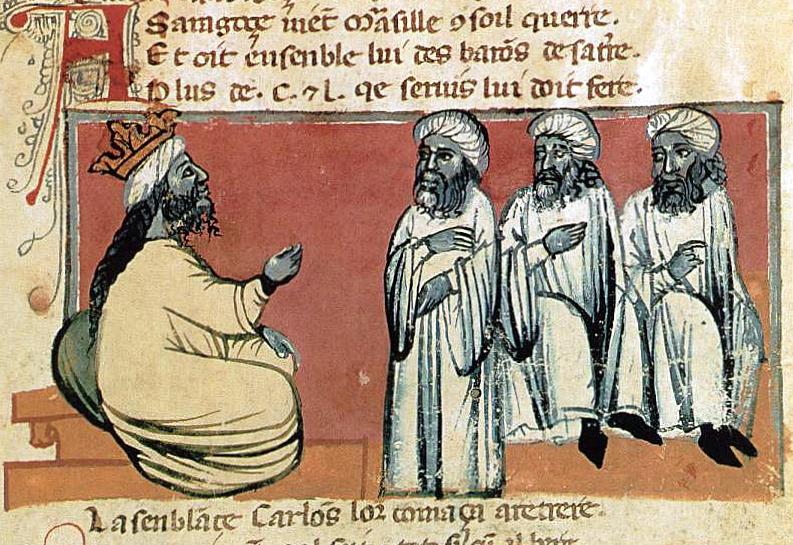
www.muslimheritage.com/article/tale-two-civilisations-viking-and-muslim-world


